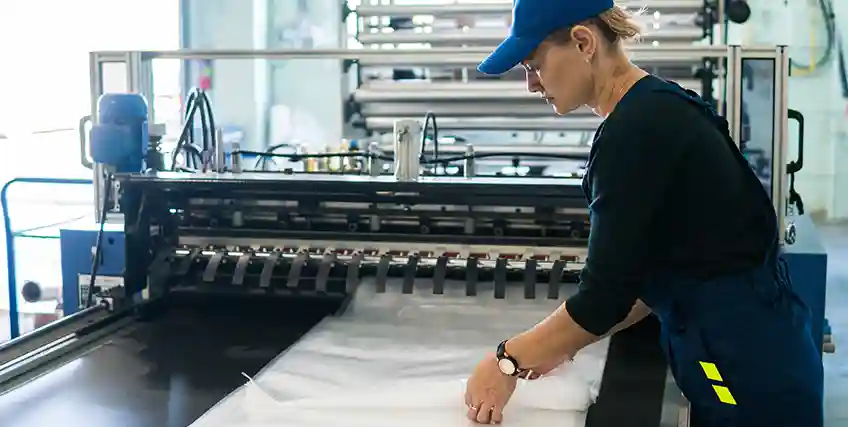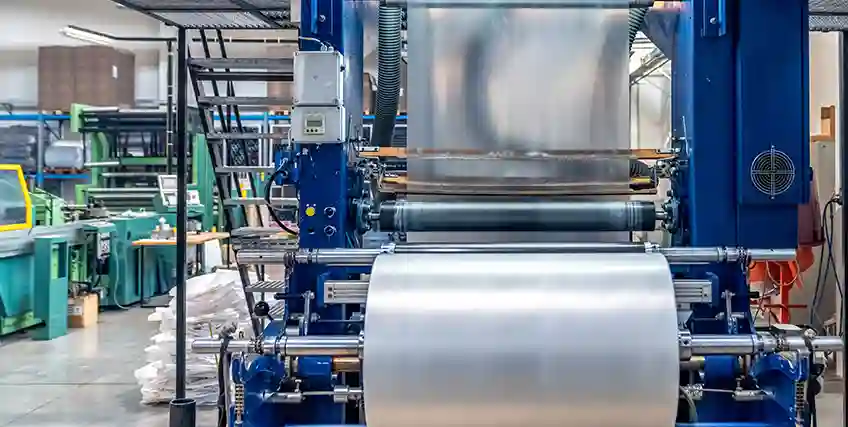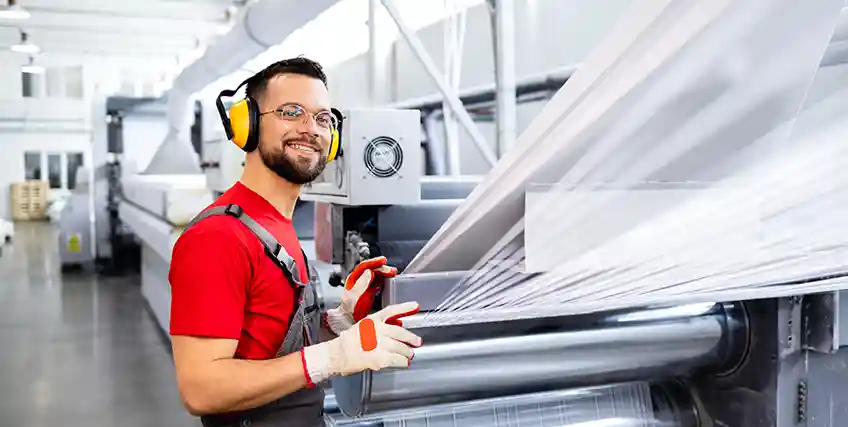Loans for Plastic Packaging Production: Financing the Future of Packaging
Jun 12, 2025 | Last Updated on: Jun 16, 2025

The plastic packaging production industry plays a vital role in the global supply chain, providing efficient, durable, and cost-effective solutions for preserving and transporting goods. From food products to pharmaceuticals, plastic packaging production is ubiquitous. As the demand for plastic packaging continues to rise, so does the need for robust financial support to help manufacturers scale operations, adopt sustainable practices, and invest in new technologies.
One of the most accessible ways for manufacturers to achieve these goals is through business loans. Loans for plastic packaging production provide the capital necessary to purchase equipment, expand facilities, hire labor, and transition to eco-friendlier alternatives. This article explores the types of loans available, application procedures, eligibility criteria, and how funding can transform the plastic packaging production landscape.
The Plastic Packaging Production Industry: An Overview
Plastic packaging production encompasses a wide array of products including bottles, containers, films, and wraps. It's favored for its lightweight nature, flexibility, and cost-effectiveness. The industry has grown significantly in the past decade, driven by the booming e-commerce sector, urbanization, and changing consumer behavior.
Despite its benefits, the industry faces mounting criticism for its environmental impact. There is increasing pressure on producers to develop biodegradable or recyclable packaging. Financial constraints, however, often hinder innovation. Therefore, access to capital through loans is essential for modernizing production lines and meeting sustainability targets.
Why Plastic Packaging Production Manufacturers Need Loans
1. Capital-Intensive Equipment
Plastic packaging production involves specialized machinery such as extrusion blow molders, thermoformers, and injection molding machines. These machines are expensive and require regular maintenance or replacement, making capital funding essential.
2. Facility Expansion
As demand grows, companies must increase their output. This necessitates expanding physical facilities, which involves construction, leasing, or purchasing additional space—often with substantial upfront costs.
3. Raw Material Procurement
Manufacturers must maintain a steady supply of raw materials such as polyethylene, polypropylene, and other polymers. Bulk purchasing of these materials can save costs in the long run but requires significant initial capital.
4. Workforce Development
To operate new equipment or scale production, businesses must invest in hiring and training skilled labor. Loans can help cover wages, benefits, and training costs.
5. Sustainability Initiatives
Government regulations and consumer demand are pushing for environmentally friendly packaging solutions. Investing in biodegradable materials and advanced recycling technology requires financial backing.
Types of Loans for Plastic Packaging Production
There are various financial instruments available to plastic packaging production manufacturers, depending on the size of the business, creditworthiness, and intended use of funds.
1. Term Loans
Term loans are a common type of business financing. A company borrows a fixed amount and repays it over a predetermined period with interest. These loans are ideal for purchasing machinery or upgrading production lines.
2. Equipment Financing
This specialized loan is used exclusively for purchasing new or used equipment. The machinery itself often serves as collateral, which can make approval easier and interest rates lower.
3. Working Capital Loans
These loans are designed to fund everyday operations. They’re especially useful for covering short-term expenses like payroll, raw materials, or utility bills during periods of high demand or low liquidity.
4. Lines of Credit
A line of credit provides flexible access to funds up to a set limit. Manufacturers can draw on this as needed, making it ideal for managing cash flow and seasonal fluctuations.
5. Government-Backed Loans
Many governments offer loans or grants for sustainable packaging initiatives. For example, in the U.S., the Small Business Administration (SBA) offers various loan programs.
6. Green Loans and ESG Financing
Financial institutions now offer green loans tied to Environmental, Social, and Governance (ESG) criteria. These loans often come with favorable terms for companies adopting sustainable practices in plastic packaging production.
Financing Manufacturing Equipment for Plastic Packaging Production
Plastic packaging remains a vital component across multiple industries, including food and beverage, pharmaceuticals, personal care, and consumer goods. As demand for sustainable and efficient packaging solutions grows, so does the need for advanced plastic packaging production equipment. However, acquiring such machinery—whether extrusion lines, thermoforming machines, injection molders, or printing units—often involves a significant capital outlay. Financing manufacturing equipment leasing offers a practical solution to scale operations without the burden of immediate full payment.
Understanding Plastic Packaging Production Equipment Financing
Equipment financing allows businesses to obtain the machinery they need while preserving cash flow. This method involves either leasing or taking out a loan to purchase equipment, with the machinery itself often serving as collateral. It’s an appealing option for companies seeking to remain agile in competitive markets.
There are two primary types of financing:
- Equipment Leasing: This provides access to machinery without owning it outright. At the end of the lease term, businesses may have the option to purchase the equipment, renew the lease, or return it. Leasing is especially beneficial for rapidly evolving technology where frequent upgrades are necessary.
- Equipment Loans: This involves borrowing a fixed amount to purchase equipment, typically repaid in monthly installments over several years. Once fully paid, the company owns the machinery. Loans may come from banks, credit unions, or specialized equipment financing firms.
Benefits of Financing Plastic Packaging Equipment
- Cash Flow Management: Financing spreads the cost over time, preserving working capital for other operational needs like labor, raw materials, or marketing.
- Possible Tax Advantages: Depending on the jurisdiction, financed equipment may be eligible for tax deductions such as depreciation or Section 179 in the U.S., which allows businesses to deduct the full purchase price of qualified equipment.
- Access to Advanced Technology: Financing makes it easier to adopt state-of-the-art machinery, improving production speed, efficiency, and product quality—key factors in staying competitive.
- Flexibility: Many lenders offer tailored repayment terms, allowing manufacturers to align payments with production cycles or seasonal income fluctuations.
Considerations Before Financing
- Total Cost of Ownership: Always evaluate the full cost, including interest, maintenance, insurance, and potential upgrade expenses.
- Vendor Reputation: Work with reliable manufacturers and financing partners who offer post-sale support, training, and warranties.
- Return on Investment (ROI): Assess how quickly the new equipment will pay for itself in increased productivity, reduced waste, or new market opportunities.
Sustainable Production Equipment Financing
As regulations around plastic use tighten, many companies are shifting toward environmentally friendly packaging solutions. Financing eco-conscious equipment—such as biodegradable plastic extruders or recycling-integrated systems—can position businesses for long-term compliance and brand advantage.
Financing plastic packaging production equipment enables manufacturers to stay competitive, scale effectively, and adopt new technologies without depleting financial resources. Whether upgrading existing machinery or launching a new production line, flexible financing options can make advanced packaging solutions more accessible and strategically beneficial. Partnering with the right financial and equipment providers is crucial to maximizing ROI and ensuring long-term operational success.
How to Apply for a Loan
1. Assess Your Needs
Clearly outline what the loan will be used for—whether it's for machinery, facility expansion, or R&D. This helps in choosing the right type of loan and preparing documentation.
2. Prepare a Business Plan
A strong business plan demonstrates to lenders that your project is viable. Include market analysis, financial projections, operational plans, and environmental impact statements if relevant.
3. Gather Financial Documents
You’ll need to provide tax returns, bank statements, balance sheets, income statements, and cash flow forecasts. These documents help lenders assess your creditworthiness.
4. Check Credit Scores
Both personal and business credit scores affect loan eligibility and interest rates. A higher score increases the chance of approval and more favorable terms.
5. Compare Lenders
Don’t settle for the first offer. Compare interest rates, repayment terms, fees, and customer reviews. Consider traditional banks, online lenders, credit unions, and government programs.
6. Submit Your Application
Once everything is in order, submit your application. Some lenders provide decisions within days, while others may take weeks, especially for government-backed loans.
Factors Affecting Loan Approval
Several elements determine whether a plastic packaging production business qualifies for a loan:
- Credit History: A strong credit record is crucial.
- Business Age: Startups may face more scrutiny than established firms.
- Revenue and Profitability: Lenders want to ensure you can repay the loan.
- Collateral: Assets like equipment or property can improve approval chances.
- Industry Risk: Perceived environmental risks may require mitigation plans.
- Regulatory Compliance: Demonstrating adherence to environmental laws is increasingly important.
Risks and Challenges
While loans can be transformative, they come with risks:
1. Debt Burden
Taking on too much debt can strain cash flow, especially if revenues don’t grow as projected.
2. Market Volatility
Fluctuations in oil prices (which affect plastic raw material costs), changing consumer preferences, and geopolitical instability can disrupt operations.
3. Technological Obsolescence
Investing in equipment that quickly becomes outdated due to rapid innovation can waste capital.
4. Regulatory Uncertainty
Evolving environmental regulations may require unexpected changes in production processes, necessitating further investment.
The Future of Plastic Packaging Finance
As global scrutiny of plastic waste intensifies, the packaging industry must innovate or risk obsolescence. Fortunately, financial institutions are beginning to reward environmentally responsible behavior. Loans tied to ESG performance are likely to become more common, encouraging businesses to pursue both profitability and sustainability.
Additionally, fintech companies are simplifying access to capital through AI-driven underwriting and fast-tracked loan approvals, particularly for SMEs. Blockchain technology may also enhance transparency in loan disbursement and usage tracking, reducing fraud and increasing investor confidence.
Final Thoughts on Plastic Packaging Productions
Loans for plastic packaging production are not merely financial instruments—they’re strategic tools for growth, innovation, and sustainability. Whether it's acquiring new machinery, launching green initiatives, or expanding to new markets, access to funding empowers packaging companies to meet modern challenges.
As the industry grapples with environmental and economic shifts, responsible borrowing backed by a clear vision can transform how plastic packaging is produced and perceived. With the right financing strategy, manufacturers can lead the way toward a more sustainable, scalable, and successful future.
FAQs About Plastic Packaging Production
What is ESG financing?
Financial institutions now offer green loans tied to Environmental, Social, and Governance (ESG) criteria. These loans often come with favorable terms for companies adopting sustainable practices in plastic packaging production.
What are the types of plastic packaging production equipment financing?
There are two types of production equipment financing:
Equipment Leasing: This provides access to machinery without owning it outright. At the end of the lease term, businesses may have the option to purchase the equipment, renew the lease, or return it. Leasing is especially beneficial for rapidly evolving technology where frequent upgrades are necessary.
Equipment Loans: This involves borrowing a fixed amount to purchase equipment, typically repaid in monthly installments over several years. Once fully paid, the company owns the machinery. Loans may come from banks, credit unions, or specialized equipment financing firms.
What is a term loan for plastic packaging production?
A term loan is the most common type of business financing. A company borrows a fixed amount and repays it over a predetermined period with interest. These loans are ideal for purchasing machinery or upgrading production lines.
What is a working capital loan?
Working capital loans are designed to fund everyday operations. They’re especially useful for covering short-term expenses like payroll, raw materials, or utility bills during periods of high demand or low liquidity.
What is one benefit of plastic production equipment financing?
Access to advanced technology is one benefit of equipment financing. Financing makes it easier to adopt state-of-the-art machinery, improving production speed, efficiency, and product quality—key factors in staying competitive.
Frequent searches leading to this page
Related Articles
Term Loans are made by Itria Ventures LLC or Cross River Bank, Member FDIC. This is not a deposit product. California residents: Itria Ventures LLC is licensed by the Department of Financial Protection and Innovation. Loans are made or arranged pursuant to California Financing Law License # 60DBO-35839




